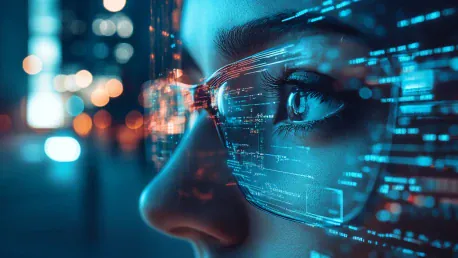Smartphone-based augmented reality (AR) applications have gained immense popularity, allowing users to overlay visual elements on their real-world environment through their smartphone cameras. The applications range from visualizing furniture in homes and enhancing navigation systems to playing interactive games like Pokémon GO. Although AR is widely used, its performance, particularly in indoor settings, is significantly hindered by various technological limitations. Overcoming these limitations could revolutionize the user experience, making AR more reliable and immersive in different environments.
Understanding the Basics of AR Technology
AR applications rely on the smartphone’s ability to determine its location, a process known as localization, and its movement, referred to as tracking. To accomplish these tasks, two main systems are utilized: visual sensors, including the camera and LiDAR, which can detect landmarks such as QR codes or AprilTags, and the inertial measurement unit (IMU), a small sensor within smartphones that tracks movement. This technology, while advanced, has limitations that become particularly apparent in indoor environments where factors such as lighting, distance, and angles pose challenges.
Researchers from Osaka University have taken significant steps to identify the specific reasons why AR fails indoors. Their findings, presented at the 30th Annual International Conference on Mobile Computing and Networking, stem from comprehensive real-world experiments. Over a span of 113 hours conducting case studies across 316 unique patterns in real-world settings, the researchers manipulated sensor usage, environmental complexity, and lighting conditions to isolate and examine the failure modes of AR. The meticulous approach provided in-depth insights into the challenges faced by AR applications when used indoors.
Key Challenges in Indoor AR Performance
One of the primary issues identified was the drifting of virtual objects within the AR scene. This drifting disrupts the user experience by causing inconsistencies that lead to motion sickness and reduce the overall sense of immersion. The difficulty in detecting visual landmarks from a distance, at extreme angles, or in poorly lit rooms further compounds these problems. While LiDAR technology is beneficial, it is not without its flaws and can become unreliable under certain conditions. Similarly, the IMU, although constantly active, accumulates errors over time, particularly when dealing with varying speeds.
In one of the studies, the research team set up a virtual classroom in an empty lecture hall, allowing participants to arrange virtual desks and chairs. This setup provided valuable insights into how AR applications perform under different conditions. The observations highlighted significant issues such as lower task completion rates, greater drift, and increased motion sickness in darker environments. These findings emphasize the necessity for reliable localization and tracking mechanisms that can adeptly handle varying environmental conditions.
Proposed Solutions for Enhanced AR Performance
To address these issues, the researchers suggest adopting radio-frequency–based localization methods, such as ultra-wideband (UWB)-based sensing. In contrast to vision-based methods, UWB-based localization remains unaffected by lighting conditions, distances, or obstructions in the line of sight. This technology is already implemented in popular devices like Apple’s AirTag and Samsung’s Galaxy SmartTag+. The robustness of UWB technology offers a promising solution to some of the challenges faced by indoor AR applications, ensuring more accurate and reliable performance.
Moreover, integrating UWB with alternative sensing modalities such as ultrasound, WiFi, Bluetooth Low Energy (BLE), or Radio Frequency Identification (RFID) could further enhance the performance and reliability of indoor AR applications. Combining these technologies with existing vision-based techniques presents a holistic approach to tackling the limitations of indoor AR. By leveraging multiple sensing methods, AR applications can achieve greater stability and consistency, thereby enriching the user experience across a variety of indoor settings.
Enhancing User Experience in Indoor AR
The research underscored the importance of resilient localization and tracking mechanisms through detailed observations of subjective AR experiences. Tasks such as arranging virtual furniture in bright versus dark rooms revealed significant differences in user performance. Participants reported lower task completion rates, more pronounced drift, and increased motion sickness in poorly lit conditions. These findings highlight the critical role of robust localization and tracking systems in providing a seamless and immersive AR experience.
By integrating UWB or other sensing technologies with vision-based methods, indoor AR applications could achieve unprecedented levels of stability and immersion. This combined approach can help circumvent current constraints, making smartphone-based augmented reality more effective and enjoyable for users. The enhancements could pave the way for a wide range of applications, from educational tools and interior design aids to advanced gaming and navigation systems, all benefiting from improved reliability and user satisfaction.
Future Directions for Indoor AR Development
Smartphone-based augmented reality (AR) applications have become incredibly popular, enabling users to superimpose digital visuals onto their real-world surroundings through their phone cameras. These applications have a wide range of uses, from allowing users to visualize how furniture will look in their homes and improving navigation systems, to engaging in interactive games such as Pokémon GO. Despite the widespread adoption of AR, its performance, especially in indoor environments, faces considerable challenges due to various technological constraints. These limitations can include issues with spatial recognition, lighting conditions, and the processing power of smartphones. Addressing and overcoming these technological hurdles could drastically enhance the user experience, making AR applications more reliable, seamless, and immersive in an array of settings, both indoors and outdoors. This evolution could open up new possibilities for AR, expanding its utility and making it an even more integral part of everyday life.









